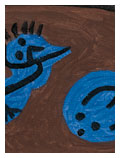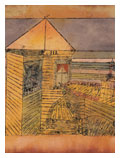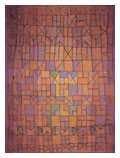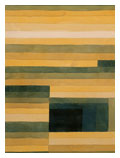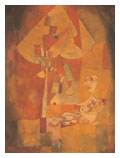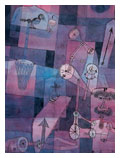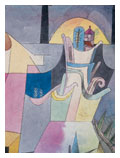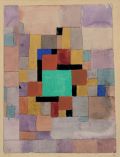Paul Klee. The Berggruen Collection
Organized in collaboration with the Fundación Marcelino Botín (Santander)
October 13 2006 / January 7 2007
Palazzo Ruspoli (95.760 visitors)
Curated by Olivier Berggruen
Lenders: Metropolitan Museum of Art, New York; Nationalgalerie – Museum Berggruen, Berlino; Centre George Pompidou, Paris; Berggruen Collection, Paris.
Catalogue Skira
- Zucca della cutrettola 1939
- Magnifico Atterraggio
- Arazzo 1923
- Felsenkamer 1929
- L’uomo sotto il pero
- Analisi di Varie Perversioni
The German painter Paul Klee (1879-1940) is one of the most beloved artists of the Twentieth century. Born in Switzerland, he studied in Munich and traveled to Italy before returning to Bern (in 1902) where he spent a long period of isolation, studying the work of Kandinsky and his friends from Der Blaue Reiter as well as the Cubists and Delaunay. It was following a trip to Tunisia in 1914 that he began to develop his own style of abstract forms and symbolic representation. In the words of Sabine Rewald (curator of the Metropolitan Museum, New York), “turning his back on nature, he derived his subjects from his own imagination, from his reactions to the world around him, experiences of the past around him, poetry, music, botanical and scientific things – in short, a world of fantasy, full of irony, bizarreness, and mischievous humor yet intertwined, especially towards the end of his life, with melancholy.”
In 1920 he was invited to join the academic staff of the Bauhaus, the revolutionary art school in Weimar. Thus began the most prolific decade of his career, producing mainly watercolors and small but exquisite drawings. Not surprisingly, some of the paintings he executed during his years at the Bauhaus relate to the topics of his courses. His preoccupation with the interplay of colors led to the so-called color-graded paintings, saturated with a movement going from light to dark or from foreground to background. Other works are, contrarily, more witty, bizarre or musical. In 1931 he left the Bauhaus and returned to Switzerland with the arrival of the Nazi regime. In the last years of his life, frail and ill, he created a vast number of gouaches and drawings of lyrical, evanescent, imaginary figures, often representing angels.
Born in Berlin in 1914, Heinz Berggruen emigrated to the United States in 1936. After the war he moved to Paris where he worked for UNESCO and, in 1948, made the crucial decision to open an art gallery on the Left Bank. His long career is associated with the work of artists such as Picasso, Miró, Matisse, Juan Gris and many others. But Paul Klee (whom he never met) held a special place among his affections and repeatedly showed his works, by publishing elegant catalogues for the occasion. Heinz Berggruen has been collecting Klee’s work since the mid-1940s. In 1973, he donated 13 of Klee’s works to the Musée National d’Art Moderne de Paris (now the Centre George Pompidou), and later 90 works to the Metropolitan Msueum of Art in New York. A significant group of works is also in the collection of the Berggruen Museum in Berlin, a museum founded in 1996 under the Stiftung Preußischer Kulturbesitz (Superintendence of the Berlin Museum Complex). As a tribute to a career so closely associated with Klee’s work, the current exhibition will bring together works from the 3 museums mentioned above as well as from the private collection of Heinz Berggruen. All periods and media will be represented in the exhibition, with particular focus on the Bauhaus years.
The exhibition will be curated by Olivier Berggruen, Heinz Berggruen’s youngest son. After studying art history at Brown University and the Courtauld Institute in London, Olivier Berggruen worked at Sotheby’s in London, before curating numerous museum exhibitions including Matisse, Yves Klein and Ed Ruscha. He is associate curator of the Schirn Kunsthalle in Frankfurt.

